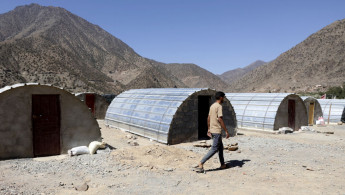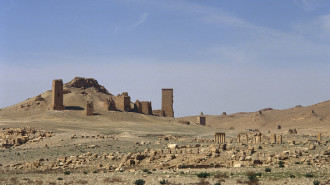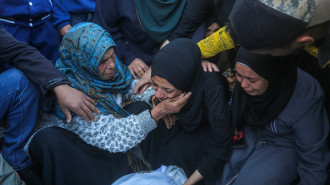A year on from a devastating earthquake, Marrakesh thrives as tragedy persists in villages
A year since a deadly earthquake struck the country, Marrakesh is once again a radiant destination for those chasing sun, joy, and good food. The surrounding villages, however, remain trapped by the disaster's aftermath.
Nestled at the foothills of the Atlas Mountains, Marrakesh has always been Morocco's star attraction, drawing nearly three million visitors yearly.
On 8 September 2023, a 6.8 magnitude earthquake struck the city just after 11 PM local time. The epicentre was in the High Atlas Mountains, roughly 71 kilometres southwest of Marrakech.
The quake was strongly felt in Marrakesh, with cracks appearing on the walls of the historic Medina, where tourists stay at the decades-old Riads.
Thousands fled their homes, spending nights in the streets fearing aftershocks, while tourists packed quickly their bags and left the country for good.
This is how Nassim Ait Said, manager of Riad Nelia, a boutique hotel in the city's old square, recalls the night of the quake.
"We struggled after the earthquake. But today, things are better than ever. We've been fully booked for months," Ait Said told The New Arab. "People are back to enjoy the beauty of Marrakesh."
In the first two months of 2024, 1.3 million people arrived at Marrakesh Menara Airport. In May, the airport saw an unexpected spike in tourist arrivals, overwhelming its infrastructure with lines that lasted for hours.
Two weeks after the earthquake, Morocco's National Tourism Office (ONMT) launched the "Let's Meet in Marrakesh" campaign to encourage tourists to visit the city in solidarity with those affected. Several tour operators and hotels offered special packages that included donations to earthquake relief efforts.
The goal was not only to revive tourism in Marrakesh, but also to help the wider affected region recover economically.
Tragedy persists for the Atlas villages
Just an hour from the city, the region remains stuck in the quake's aftermath. On the road to Asni, 50 kilometres from Marrakesh, residents still mourn their homes, businesses, and loved ones.
"I don't understand why the government is taking so long to rebuild the area", says Driss Zehrour, owner of Riad Vallée Vert in Douar Taourirte, Asni.
Zehrour, who has not received any aid so far, had to use his life savings to repair his guest house, which was damaged during the quake and the aftershocks that followed.
It took him five months, but he managed to reopen in February, hoping to attract nature lovers and skiers seeking to enjoy the slopes of Oukaimeden, just an hour away from the village.
"Unlike Marrakesh, people are still scared to come here", he adds. Zehrour has managed to book only 3% of his six-bedroom guest house.
He says the sight of tents and damaged homes doesn't help attract sceptical tourists.
A few meters from the guest house, a damaged four-floor building still stands as a testament to the quake that killed nearly 2,000 people and left around 30,000 homeless.
The Moroccan government has been under fire for its slow pace of reconstruction and aid distribution.
Prime Minister Aziz Akhennouch has announced that 51,000 families have received an initial aid payment of 20,000 dirhams ($2,000) for rebuilding their homes.
Four additional aid payments are promised over the next five years: 140,000 dirhams ($14,000) for destroyed homes and 80,000 dirhams ($8,000) for partially damaged ones. Overall, 120 billion dirhams ($12 billion) have been allocated for recovery efforts.
While five years is a long time to live in a tent, the government has pledged 2,500 dirhams ($250) monthly to affected families, but only for one year.
As this year-long period nears its end, many families report they haven't received any aid since the quake took their homes and loved ones. They've held protests and submitted complaints, hoping for the support supposedly allocated to them by the state.
Local activist Ibrahim Ouaghlou says authorities "have promised to look into their cases."
They are still waiting.




 Follow the Middle East's top stories in English at The New Arab on Google News
Follow the Middle East's top stories in English at The New Arab on Google News

![A group of Palestinians, foreign and Israeli activists gather to participated in an olive picking event on the land in the town of Battir, which is under threat of confiscation by Israel in Bethlehem, occupied West Bank on 8 November 2024. [Getty]](/sites/default/files/styles/image_330x185/public/2182930803.jpeg?h=199d8c1f&itok=__0LgGsa)
